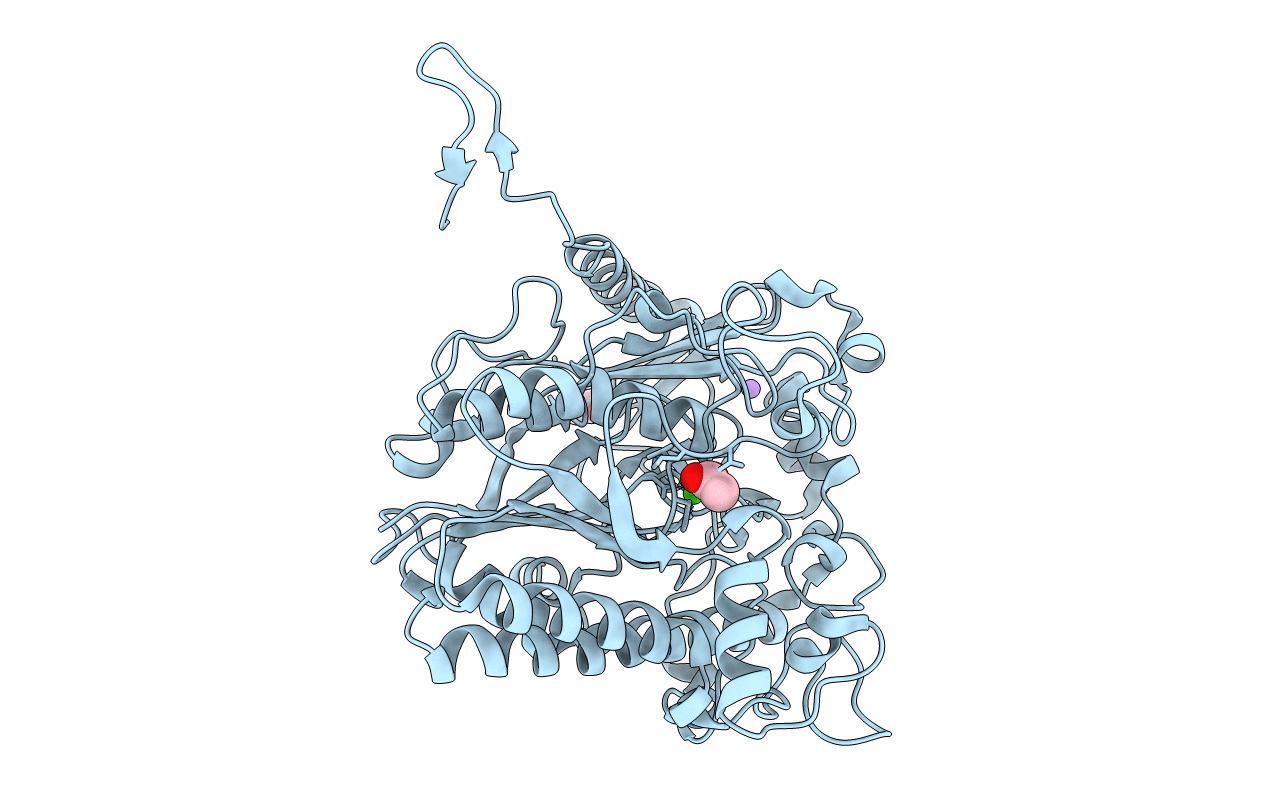
Deposition Date
2008-03-18
Release Date
2008-09-30
Last Version Date
2024-11-13
Entry Detail
PDB ID:
2VQR
Keywords:
Title:
Crystal structure of a phosphonate monoester hydrolase from rhizobium leguminosarum: a new member of the alkaline phosphatase superfamily
Biological Source:
Source Organism:
RHIZOBIUM LEGUMINOSARUM BV. VICIAE (Taxon ID: 216596)
Host Organism:
Method Details:
Experimental Method:
Resolution:
1.42 Å
R-Value Free:
0.18
R-Value Work:
0.15
R-Value Observed:
0.15
Space Group:
I 2 2 2


